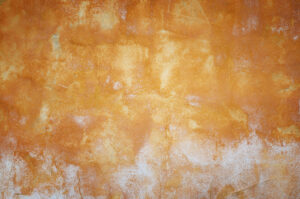Looking for a durable yet appealing flooring solution for your residential or commercial space? Stained concrete might be the answer. In Rockville, MD, expert flooring contractors can vouch for the versatility and reliability of concrete. Perfect for both interior and exterior use, its renowned durability is coupled with the ability to acquire distinctive shades through staining. This article delves deep into the world of stained concrete floors, elucidating its nature, staining mechanisms, and stain types, and addressing common queries about them.
 Understanding Stained Concrete
Understanding Stained Concrete
Essentially, stained concrete refers to concrete surfaces, typically floors, colored using either acid-based or water-based stains. Although various methods exist for coloring concrete, this guide emphasizes staining techniques.
The Staining Process
After the concrete floor is cast, set, and cured, the staining solution is applied. This stain seeps into the porous nature of the concrete, altering its hue due to the chemical interaction between the stain and the concrete’s calcium content. Unlike mere surface painting, staining offers deeper penetration, preventing easy damage due to chipping or scuffing. Note that acid-based stains require a full day to merge with the concrete, whereas water-based ones don’t. A protective sealer is essential post-staining to shield the floor.
Concrete Stain vs. Concrete Dye
While concrete stains cause a chemical reaction for lasting color, dyes merely color the surface. Stains might be somewhat unpredictable because of their reactive nature, but dyes, not undergoing any reaction, remain consistent with their packaged shade.
Stains are liquid, but dyes can be liquid concentrates, diluted solutions, or powders. For indoor usage, dyes are preferable but they’re not UV-resistant unless coated with a UV-protective sealer.
Types of Concrete Stain
Two primary stains dominate: acid-based and water-based. Let’s delve into their characteristics and benefits.
Acid-Based Stains: With over a century’s legacy, these are the typical “concrete stains” for many. Ideal for earthy shades like browns or terra cottas, they consist of metallic salts, muriatic acid, and water. The color results from metallic salts bonding with concrete’s calcium, and it’s UV-resistant. Their application often yields a marbled effect, masking any floor irregularities. However, their color range is limited mainly to browns, blues, greens, and black.
Water-Based Stains: Boasting a broader color spectrum, they provide more predictable outcomes than acid-based stains. They don’t chemically bond, dry swiftly, and are eco-friendly with negligible harmful emissions. They’re UV-stable but somewhat less hard-wearing compared to acid-based stains.
FAQs on Stained Concrete
Pressure-Washing: Yes, but cautiously. Especially with acid-stained floors, ensure the pressure doesn’t exceed 3,000 PSI, and avoid extremely hot water.
Re-Staining: Acid-based stained surfaces can be re-stained. Yet, repeated staining isn’t advisable due to unpredictable results. If a color change is needed, apply a fresh concrete layer and stain post-curing.
Fading: Outdoor exposure to UV can fade stains, especially water-based ones. Acid stains, being chemically bonded, resist fading better.
Cost: For its longevity and versatile looks, concrete is a favorite. Stained concrete flooring ranges from $2-$4 per sq. ft., making it competitively priced against less durable alternatives.
In a nutshell, stained concrete offers a unique blend of resilience, aesthetics, and affordability. Whether you prefer the unpredictable charm of acid stains or the controlled hues of water-based stains, both options offer distinct advantages. Need more insights? The Concrete, Etc. in Rockville, MD, a top-rated flooring contractor, is your one-stop-shop for all things concrete. Check out our portfolio or reach out for further details!


 Understanding Stained Concrete
Understanding Stained Concrete